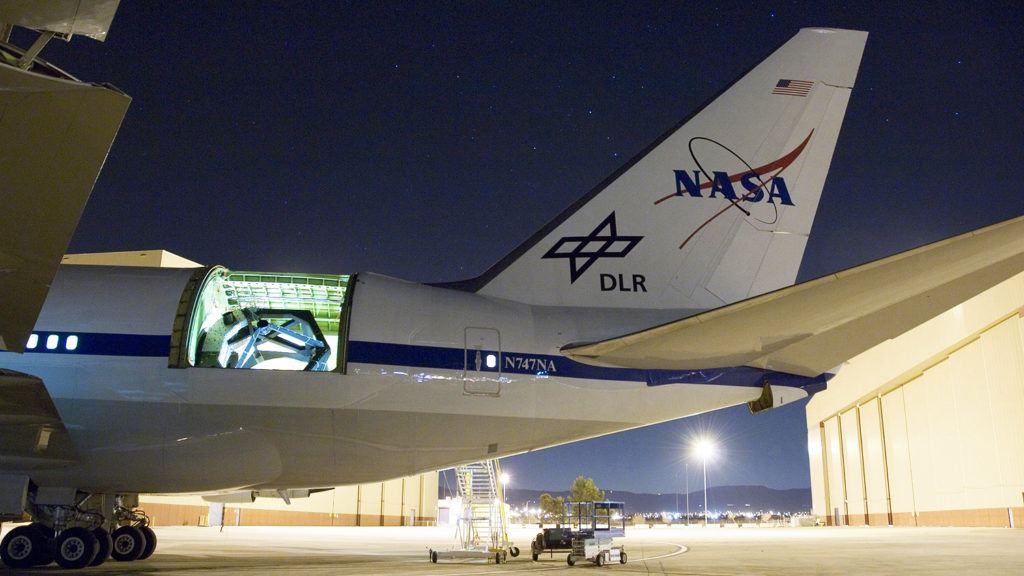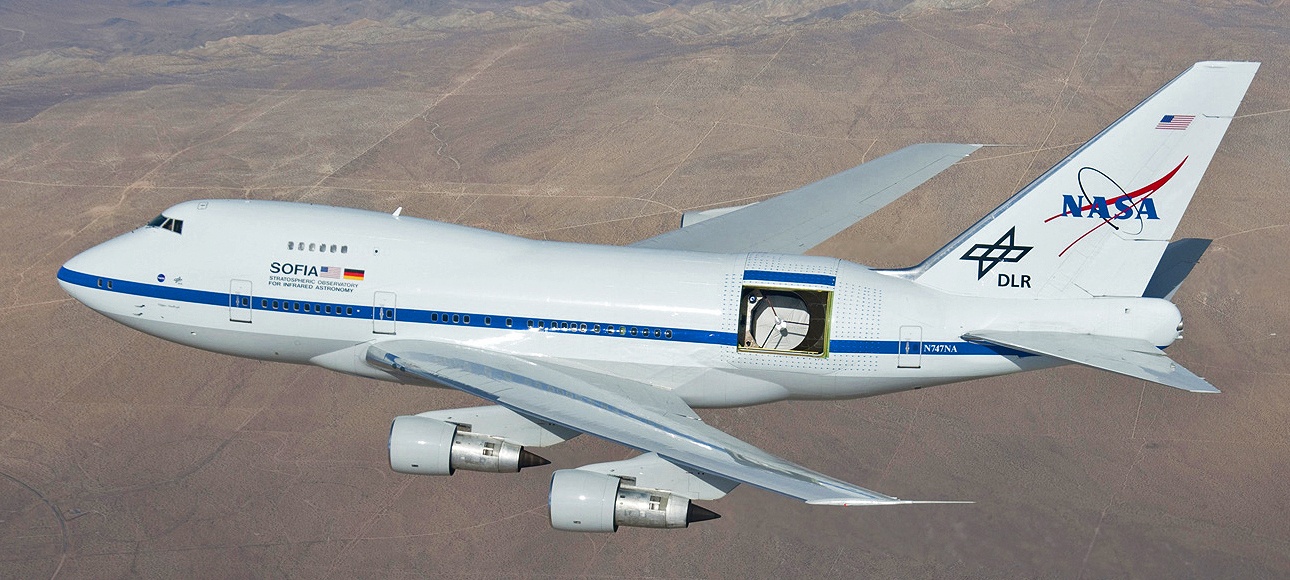NASA’s Uses the Largest Airborne Telescope Observatory in the World
- By : PureAire Monitoring Systems
- Posted on : May 02, 2018
- News Room
NASA’s latest project, a joint collaboration with the German Aerospace Center, breaks new ground for scientific discoveries. The new Stratospheric Observatory for Infrared Astronomy (or SOFIA, as it’s known) makes use of a modified Boeing aircraft and a reflecting telescope to enable spatial observations far more detailed than anything a land-based telescope could see. Get a sneak peak inside SOFIA and learn how an O2 monitor plays a pivotal role in keeping SOFIA safe.
SOFIA’s Mission
The airplane that powers SOFIA is a short-body 747, which is capable of burning through 3,600 gallons of jet fuel per hour. The plane has been extensively modified to support its new mission, which is to observe the universe using the infrared spectrum of light. This is light that is invisible to the human eye. Interestingly, many objects within space emit only infrared light, meaning that astronomers cannot perceive them with the naked eye.
SOFIA uses a lot of specialized equipment to make these infrared emissions visible. The telescope on board has a 100-inch diameter. The instrument panel contains cameras, spectrometers, and photometers which operate along near, mid, and far infrared wavelengths to study different scientific phenomena.
The telescope must be kept clean and properly chilled to see the infrared light. Bathing the telescope in liquid nitrogen keeps it properly chilled, so the telescope can detect midrange and far-out light sources. Nitrogen is used for both of these purposes because it is cost-effective, readily available, and will not damage the sensitive equipment.
SOFIA will allow astronomers to observe star birth, star death, black holes, and nebulae. It’s difficult to forecast what other findings SOFIA may facilitate.

In some cases, distant objects are blocked by clouds of space dust, much like the sun can become blocked by clouds. While the space dust prevents these far-off objects from being seem, their infrared energy still reaches SOFIA’s powerful telescope. By studying the infrared light captured on SOFIA’s instruments, astronomers can learn about new phenomena and come to a better understanding of complex spatial molecules, new solar systems, planets, and more.
Why SOFIA Needs an Oxygen Deficiency Monitor
One small but mighty piece of equipment onboard the special aircraft is an oxygen deficiency monitor. SOFIA’s powerful telescope must be cooled with liquid nitrogen. The nitrogen storage tank is located inside the crew department.
Nitrogen gas is heavier than oxygen. In the event of a leak, the nitrogen would actually displace oxygen molecules, causing the cabin air to become deficient of oxygen.
Oxygen-deficient air causes respiratory and cognitive problems within minutes, leading to death via asphyxiation. Since this gas has no color or odor, there is no way the crew can tell there is a leak onboard. This is where the O2 monitor comes in: By taking continuous readouts of cabin oxygen, the oxygen monitor allows staff to check ambient oxygen levels at a glance. Staff receive peace of mind that everything is operating smoothly as well as a fast alert if oxygen approaches hazardous levels due to a leak of nitrogen gas.
If a nitrogen leak does occur, the plane must make an emergency landing—aborting the mission to save the life of the personnel onboard. If something goes wrong while SOFIA is in flight, and the aircraft has to land before the mission is complete, the cost of wasted fuel is (pardon the pun) astronomical.
Since there is so much riding on the oxygen monitor, NASA needed a reliable product, one that would not drift from changes in barometric pressure. While there are many oxygen deficiency monitors, several products on the market are sensitive to barometric pressure shifts. PureAire offers hardy O2 monitors that are capable of maintaining reliable performance despite barometric changes.
Our O2 monitor lasts for 10 or more years after installation with no maintenance required, thanks to a robust zirconium sensor that outperforms the competition. After installation, our oxygen deficiency monitor needs no calibration to continue working accurately. If there is a nitrogen leak, the oxygen deficiency monitor provides two built-in alarms, which operate at 90 decibels. These alarms—which correlate to 19.5 percent and 18.0 percent oxygen—provide the SOFIA crew with sufficient notification of any problems, so they can return to safety.
It’s thrilling to have our products be a part of such a vital mission, and we cannot wait to see what new discoveries SOFIA facilitates. Closer to home, PureAire supports clients in a range of industries with high-value, long-lasting oxygen monitors suitable for use anywhere they are needed. Learn more about PureAire’s products at pureairemonitoring.com.
Source
https://space.stackexchange.com/questions/12295/why-do-some-space-telescopes-require-cooling-sometimes-down-to-3k



